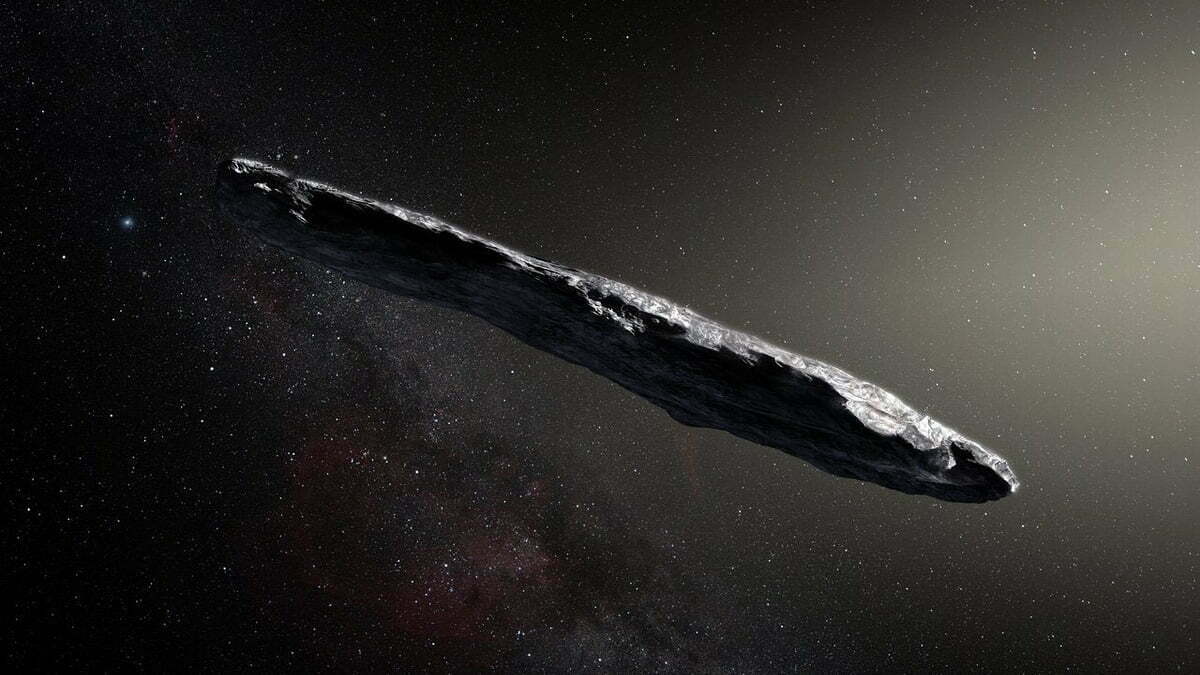Oumuamua is the first known interstellar object detected passing through the solar system. When Astronomers first detected it in the year 2017, it was too late to study it properly. But within that brief period, it exhibited some unexpected properties which left astronomers scratching their heads. Its elongated shape, lack of coma and facts that it changed its trajectory were surprising, leading to several competing theories about its origin. Many suggested it is a hydrogen iceberg exhibiting outgassing, or it is an extraterrestrial solar sail on a deep-space journey.
There is no way to know what it was for sure, as we didn’t get a good look at it. But a paper published on ArXiv suggests that in future, we might be able to study other interstellar visitors properly and may even land on it using a small satellite with a solar sail.
The paper suggested that we could design and build a spacecraft that could catch the next interstellar visitor at short notice. The idea of an interstellar interceptor like this has already been discussed, and NASA’s Innovative Advanced Concept (NIAC) program have been funding the study of such concepts. But the question is, such a mission will be feasible, and if so, then how would such an interceptor work?
The researcher suggested that combining solar sail technology with miniaturize space probes which make the spacecraft small and lightweight, could work.
JAXA’s IKAROS probe to venus and the Planetary Society’s LightSail 2 project in earth orbit have proven solar sails as a feasible propulsion system. Likewise, Jet Propulsion Laboratory’s Mars Cube One shown that CubeSats works like a charm. And researchers believe that both combined could be a powerful tool for exploration.
Solar sails are a method of spacecraft propulsion that take advantage of radiation pressure exerted by sunlight on large mirrors. The first spacecraft to make use of this technology was IKAROS, launched in 2010. A CubeSat is a type of miniaturized satellite for space research that is made up of multiple cubic modules of 10cm10cm10cm in size.

In the paper, the researcher proposes that a solar sailing CubeSat could be launched ahead of time, parking in an orbit around the sun to intercept an interstellar object whenever we noticed another interstellar visitor.
This kind of first response vehicle parked in an orbit around the sun could be activated when we discover any interesting object like Oumuamua. It can be designed for various mission types, like a five-year mission to study from up close. Or a 10 years mission to bring peace to such extraterrestrial object to earth for detailed study.
One of the major engineering challenges for such a mission concerns the solar sail’s ability to manage heat. The interceptor would have to travel much closer to the sun than any previous solar sail tests, which usually use aluminium coated with Kapton. The properties of this material might enable it to survive within 0.15 AU of the sun without melting, but careful consideration will have to be given to shielding the control mechanisms and other spacecraft
